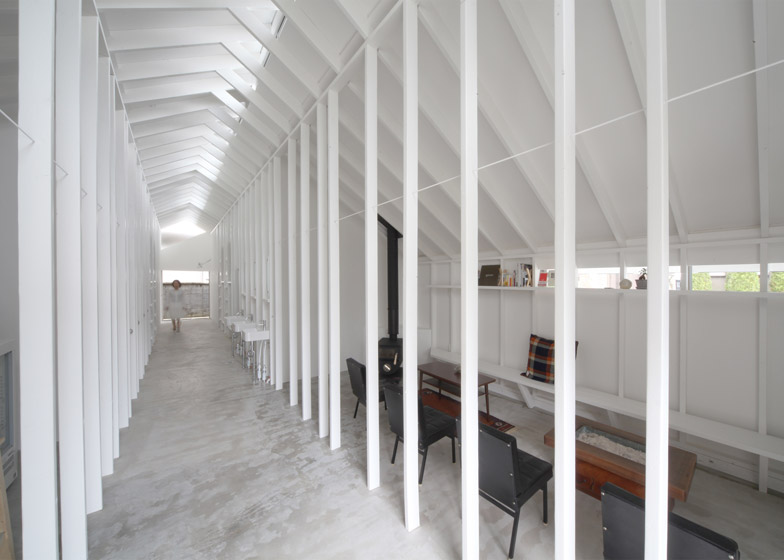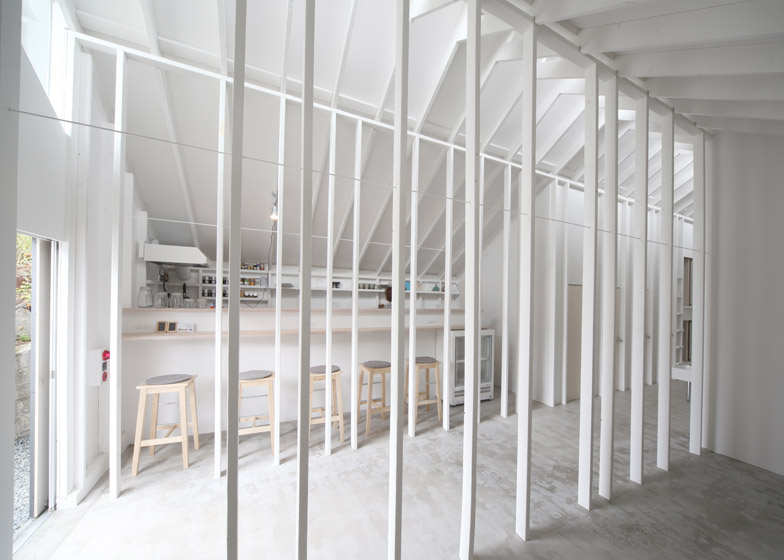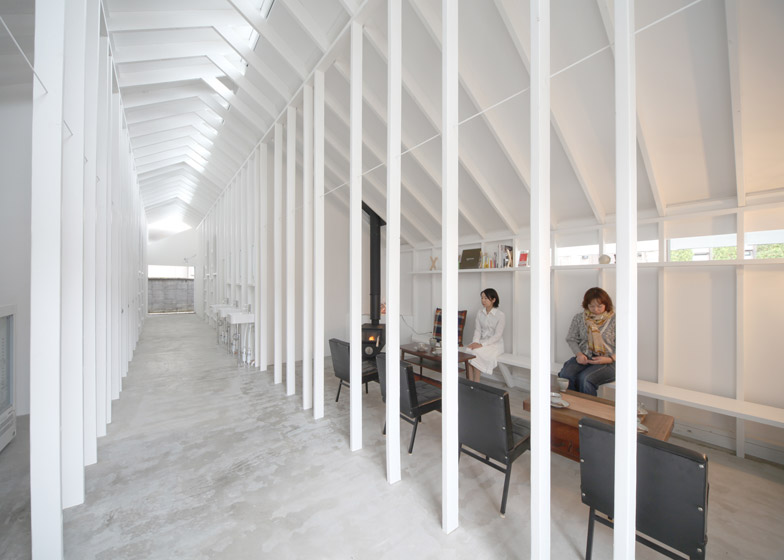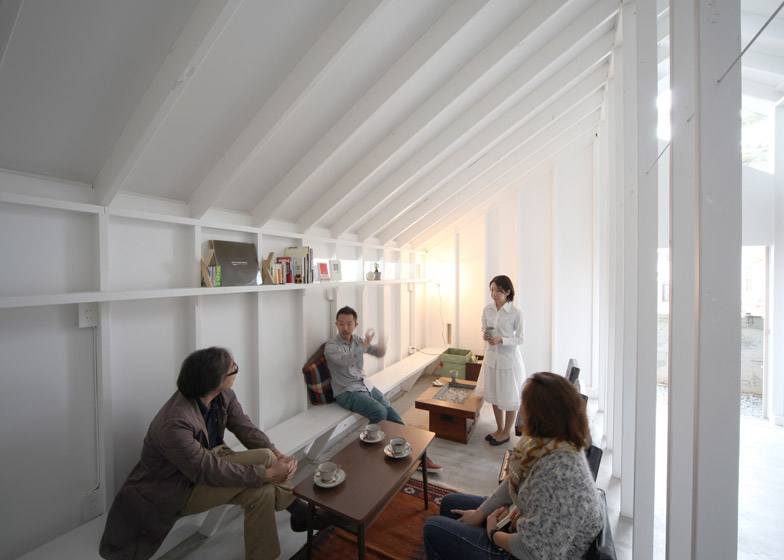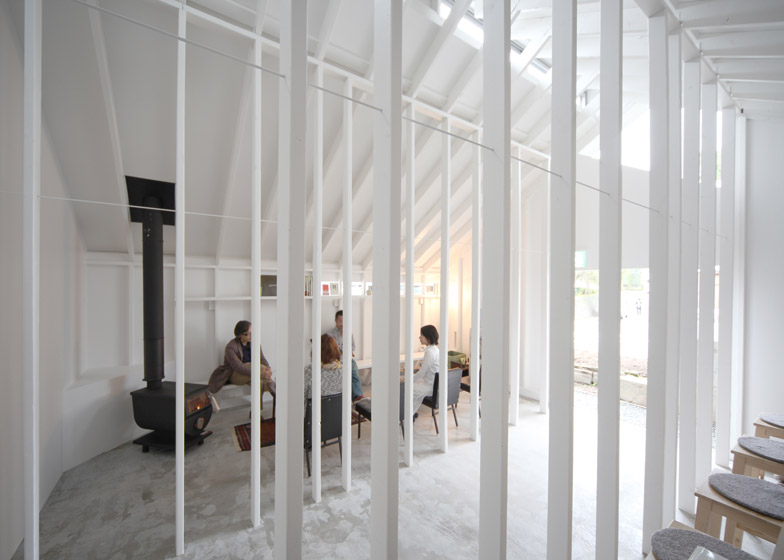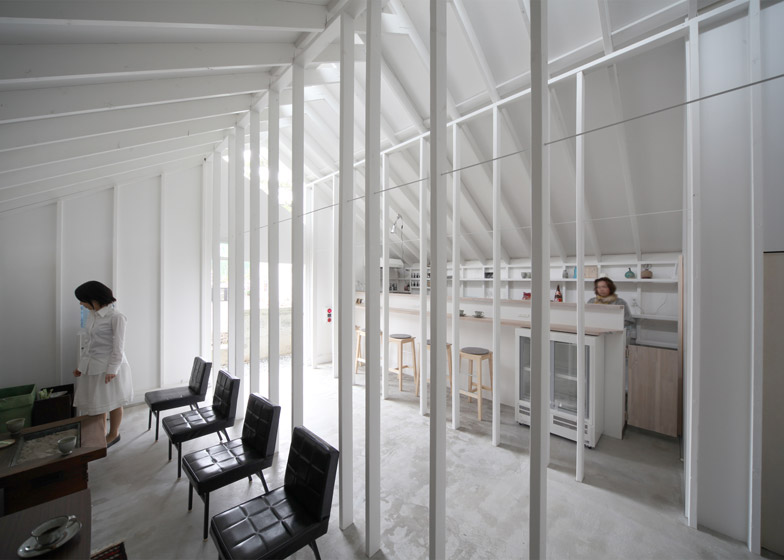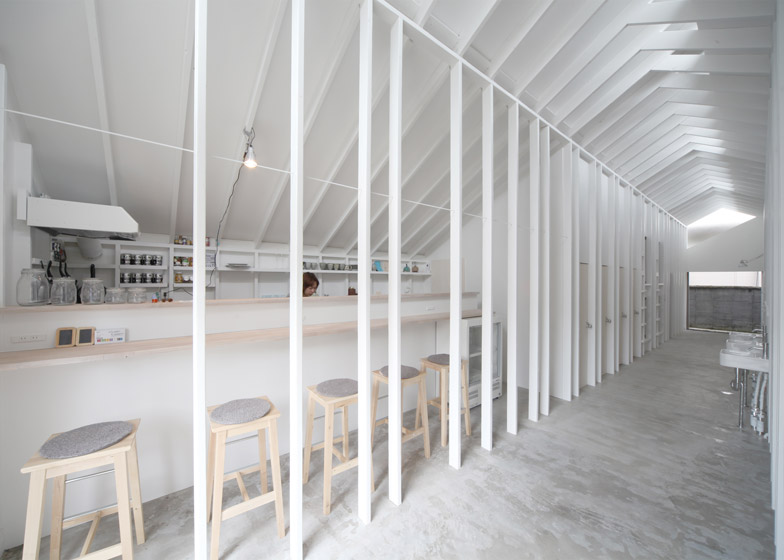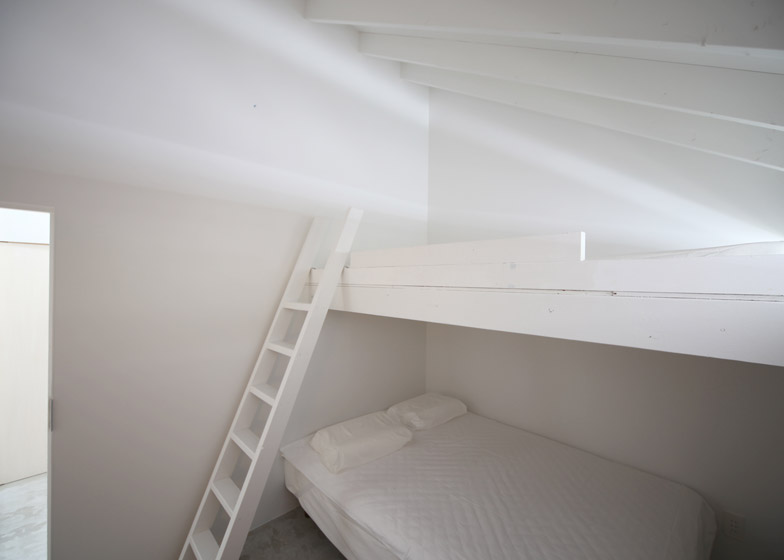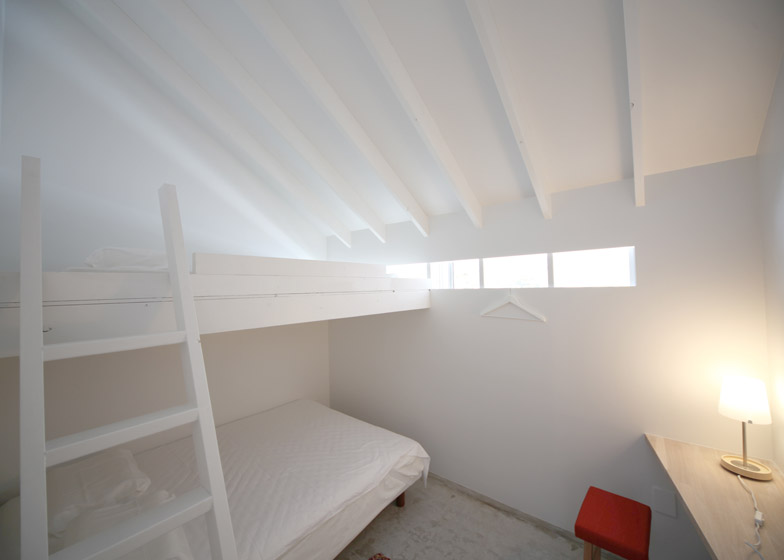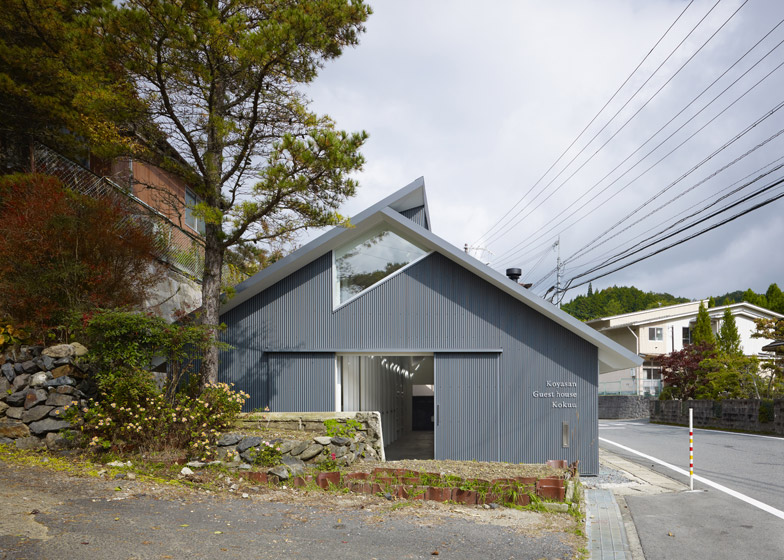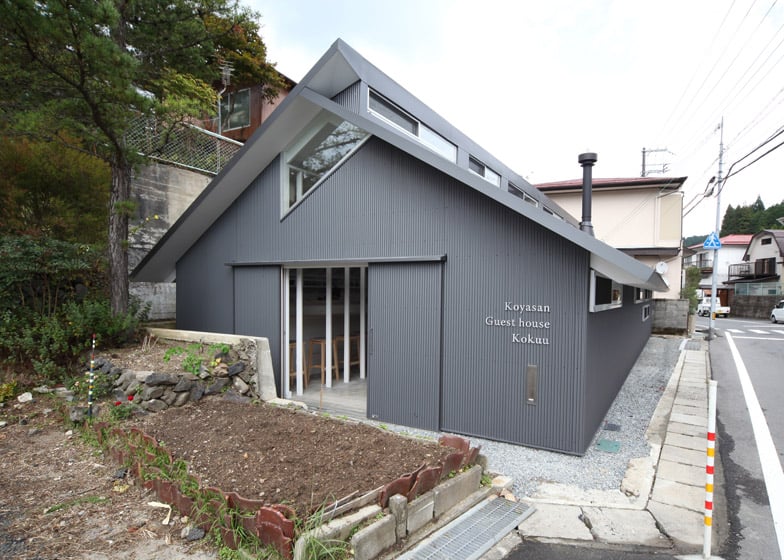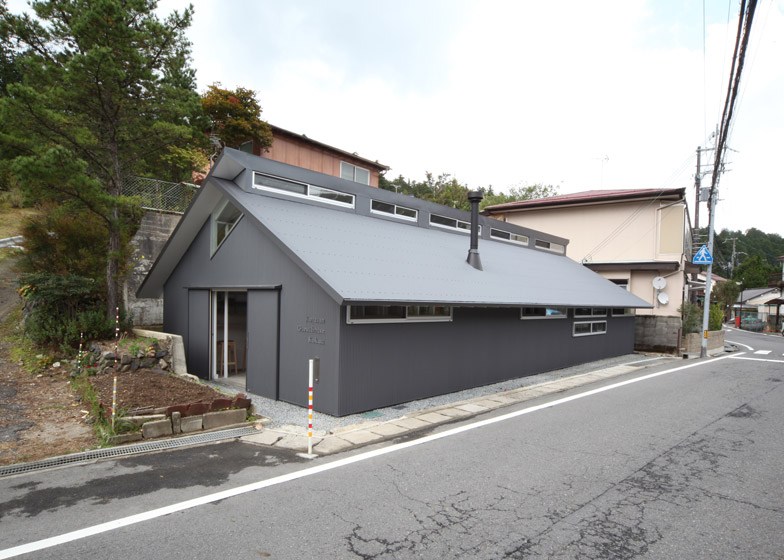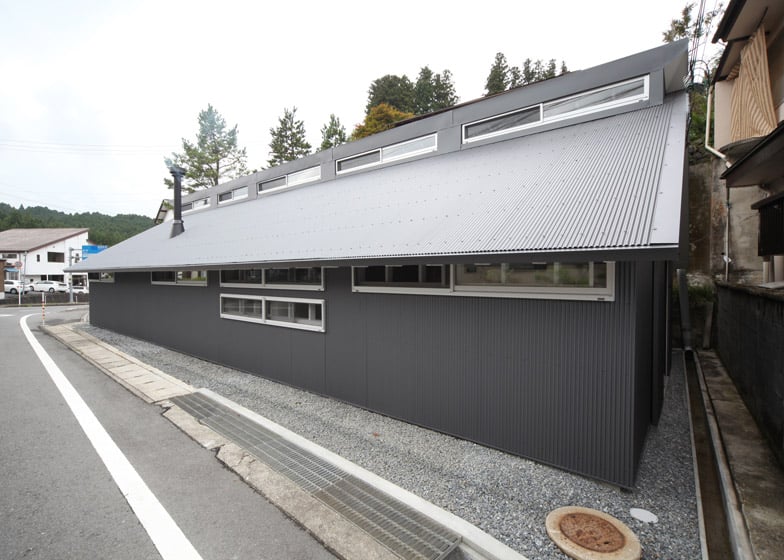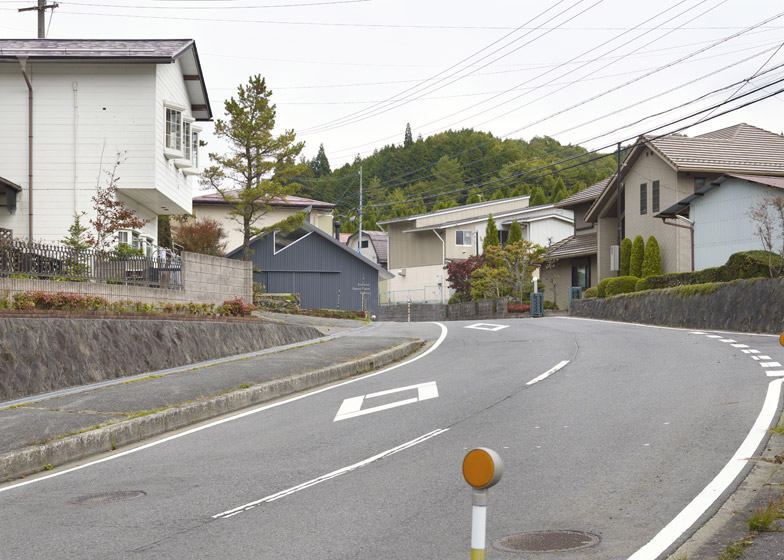Bedrooms the size of a single mattress are slotted two-high into the walls of this wooden guesthouse in Japan by Alphaville, which takes its cues from capsule hotels (+ slideshow).
Behind a grey corrugated-metal facade, slim white columns were used by Kyoto studio Alphaville to define the floor plan of the Koyasan Guesthouse.
The rows of two-by-four wooden beams are set at regular intervals, separating a living and dining area from a double-height hallway that runs through the centre of the building and offers access to the small sleeping spaces.
Hatches open into these bedroom chambers, which have been stacked on top of each other into cavities in the walls – one at ground level and one below the rafters.
Short horizontal rungs set between the timber down-posts form inbuilt ladders that allow guests to access the top bunks.
"Each single room directly faces a hall so that you can choose proper distance with other guests ensuring the privacy," said the team.
The architects designed the guesthouse for visitors to the UNESCO world heritage site of Koyasan, a temple of the Shingon Buddhism sect that was founded 1,200 years ago.
"It is a mixture of a Japanese capsule-type hotel in which the privacy is well protected, and a dormitory in which the communication among the guests is active," said the architects, who also designed a house with slanted concrete walls in Osaka.
The living room features a sloping ceiling that follow the angle of the roof and a black wood-burning stove with a flue that rises up into the exposed ceiling rafters.
Narrow clerestory windows run along one wall, bridging a hip in the roof structure, and a kitchen and breakfast bar sit across the concrete-floored hall.
"We make use of the subtle light from far above through the wooden structure, in tribute to traditional Japanese architecture," added the architects.
The open framework of the building will allow the client to adapt it as the requirements change.
"The simple composition of the space allow not only owner of this guesthouse but also guests to maintain, modify and keep on using this architecture for a long time," added the team.
Photography courtesy of Alphaville Architects.

